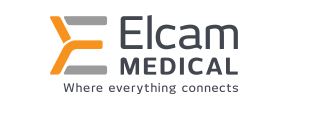Implementation
Case Studies


Dr. Reddy’s Laboratories is an Indian multinational pharmaceutical company located in Hyderabad, India. It manufactures and markets a
wide range of pharmaceuticals in India and overseas. It has more than 20,000 employees, operates 23 factories globally, 4 Research and
development centers and multitude of distribution centers around the world.
Before
- Formulation production lead time ranged between 8 to 12 weeks
- API Production lead time ranged from 3 to 5 months
- Supply reliability ranged from 40 – 80%
- New product development(NPD) cycle time averaged 915 days
- 80% of the NPD projects were completed later then planned
- 85 NPD project completed in a year
Key Changes
- Implementation of a pull demand driven supply chain based on the ToC production and distribution solutions
- Implementation of Critical Chain Project Management in the NPD division
Results
- Formulation production lead time ranged between 6 to 8 weeks
- API Production lead time ranged from 2 to 3 months
- Supply reliability ranged from 95 – 99%
- New product development(NPD) cycle time averaged 563 days
- 20% of the NPD projects were completed later then planned
- 110 NPD project completed in a year

Madura Fashion & Lifestyle, a division of Aditya Birla Nuvo Ltd, is one of India’s fastest growing branded apparel companies and a premium lifestyle player in the retail sector. The company’s brand portfolio includes product lines that range from affordable and mass-market to luxurious, high-end style and cater to every age group, from children and youth to men and women. Madura Fashion & Lifestyle is defined by its brands — Louis Philippe, Van Heusen, Allen Solly, Peter England and People. The group has a network of 3,212 brand stores across the country. It is present across 31,000+ multi-brand outlets and 6,800+ point of sales in department stores across India.
Before
- 4% net profit on sales
- 30-50% of the merchandise offered at end-of-the season discounts
- 15% of the merchandise left over after the season sold through depletion channels, by KG
Key Changes
- Implementation of a pull demand driven supply chain based on the ToC distribution solutions
- Virtually uniting all stores to be “one-stock-location”
- Launching new “home-delivery” service to items stocked-out locally but in sock elsewhere
Results
- 8% net profit on sales
- Special assortment prepared for end-of-the-season sales
- Less than 10% of merchandise sold through depletion channels

The Times of India is an Indian English-language daily newspaper and digital news media owned and managed by The
Times Group. It is the third-largest newspaper in India by circulation and largest selling English-language daily in the world. It
circulates close to 3 Million copies a day. The main business model is income from advertising.
Before
- The region was the only place India where the Times was not the leading seller of advertisements
- Historically, the region never met their quarterly sales budget, for the specific quarter of implementation
Key Changes
- Implementing a new price monitoring system, by segment
- Implementing a new measurement system, daily
- Implementing changes into the business offerings according the ToC marketing solution
Results
- For the first time, the region not only met the targets, but realized an outstanding achievement – selling 16% more than the sales budget
Seabridge
An Israeli developer and manufacturer of access switches for asynchronous transfer mode networks, that was acquired by Siemens and
Newbridge in 1997. The company was focusing on research, development and manufacturing of ATM access products, with Siemens and
Newbridge serving as distribution channels.
Before
- First project promised to the new owners was delivered 5 months later than promised, leading to some meaningful dissatisfaction
Key Changes
- Implementing the ToC Critical Chain Project Management methodology
Results
- 1st project delivered in full, within budget and on promised time
- 2nd project delivered 2 months earlier than promised
- 3rd project met “unrealistic time constraint”

An Indian consumer goods company based in Mumbai, India. GCPL’s products include soap, hair colorants, toiletries and liquid
detergents. The company operates 4 manufacturing facilities in India and has about 400 active SKU’s. The company operates through 32
regional warehouses, 1600 distributors and serves directly and indirectly 2.5 million retail outlets.
Before
- Goods were supplied to warehouses based on forecast
- Stock push to distributors at month‐end was common
- High shortages as well as surplus stocks r eported across locations
- Supply chain suffered from lower invento ry turnover, frequent changes in production plan
- Distributors faced frequent stock outs , lo w return on investment
Key Changes
- Implementing the ToC production and distribution solutions
- Implementing the ToC Marketing and Sales solutions
- Implementing the ToC Finance and Measures solution
Results
- Released additional capacity in factories between 20% to 40% with minimal investment
- Inventory availability improved from 70% to 95%
- Fill rate improvement from about 85% to 94% levels
- Inventory turns : 14 to 18 for distributors & for company from 13 to 17 within first 15 months
- Sales increased by 15% CAGR
- Market share increase –Soap market share increased significantly from 5.9% to 8.2%

An Israeli printed circuit board manufacturer. Designing and producing PCBs for various industries via
its production facility in the center of Israel with its 300 employees.
Before
- The company had relatively long supply times to customers ranging from 8 to 17 weeks
- Coupled with relatively low reliability of supply in the range of 40%
- Struggled to grow sales, and
- Experienced unstable, and low profitability
Key Changes
- Implementing the ToC production solutions
Results
- Supply lead times reduced to 6 – 10 weeks
- Reliability of supply increased to greater than 90%
- Sales grew by 25%
- Profitability increased dramatically
Ceragon Networks Ltd. is a networking equipment vendor, focused on wireless point-to-point connectivity, mostly used for wireless backhaul by mobile operators and wireless service providers as well as private businesses.


